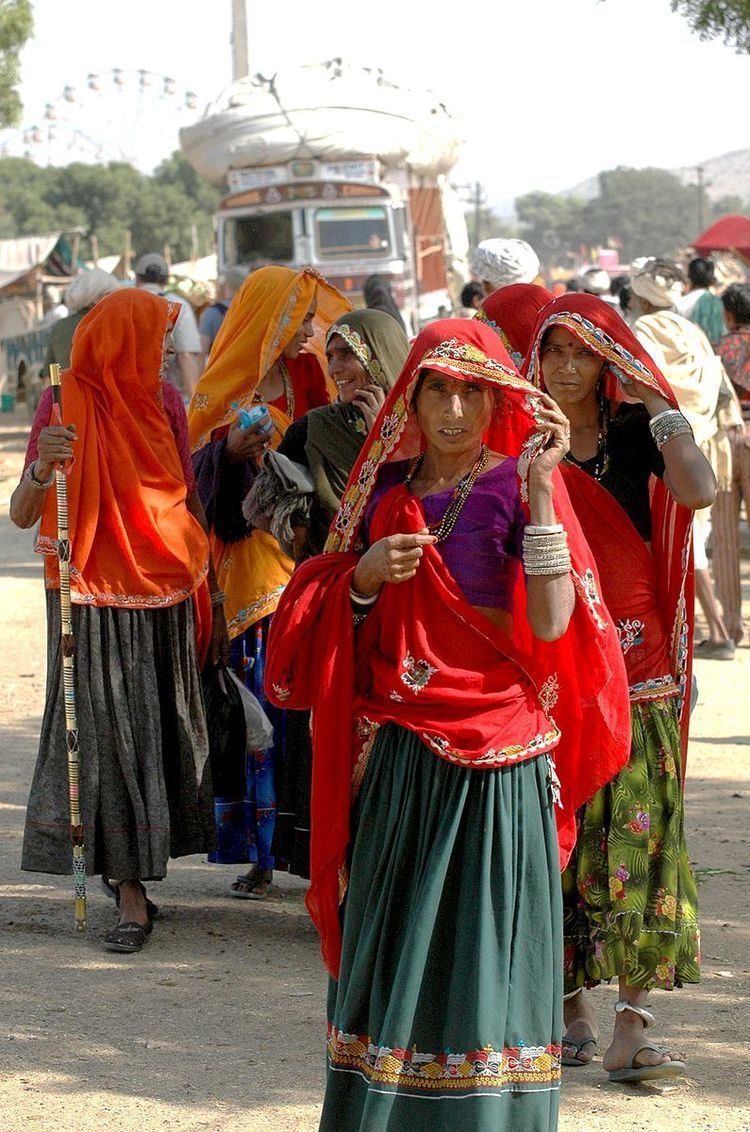 | ||
Dupatta (Hindi: दुपट्टा, Punjabi: ਦੁਪੱਟਾ/ਚੁੰਨੀ, دوپٹا, Urdu: دوپٹا Bengali: দুপাট্টা) (alternative names include chādar-orni/orna, orna (Bengali: ওড়না), unna (Sylheti: উন্না), chunri, chunni and pacheri) is a long, multi-purpose scarf that is essential to many South Asian women's suits and matches the woman's garments. The dupatta is most commonly used with shalwar kameez and the kurta, but is also worn over the choli or gharara. The dupatta has long been a symbol of modesty in South Asian dress.
Contents
History and origin
The word dupatta is a combination of 'du-' meaning two, and 'patta' meaning strip of cloth, originally from Sanskrit. Early evidence of dupatta veil or scarf can be traced to the Indus valley civilization, where the sculpture of the Priest King whose left shoulder is covered with some kind of a chaddar, suggests that the use of the dupatta dates back to this early Indic culture. Early Sanskrit literature has a wide vocabulary of terms for the veils and scarfs used by women during ancient period, such as Avagunthana meaning cloak-veil, Uttariya meaning shoulder-veil, Mukha-pata meaning face-veil, Sirovas-tra meaning head-veil. Dupatta veil is believed to have evolved from ancient Uttariya veil, worn by women in ancient period as part of three-piece attire.
Use
Dupatta is worn in many regional styles across South Asia. Originally, it was worn as a symbol of modesty. While that symbolism still continues, many today wear it as just a decorative accessory. There is no single way of wearing the dupatta, and as time evolves and fashion modernizes, the style of the dupatta has also evolved.
A dupatta is traditionally worn across both shoulders and around head. However, the dupatta can be worn like a cape around the entire torso. The material for the dupatta varies according to the suit. There are various modes of wearing dupatta. When not draped over the head in the traditional style, it is usually worn with the middle portion of the dupatta resting on the chest like a garland with the ends thrown over each shoulder. When the dupatta is worn with the salwar-kameez it is casually allowed to flow down the front and back. In current fashions, the dupatta is frequently draped over one shoulder and even over just the arms. Another recent trend is the short dupatta, which is more a scarf or a stole, often worn with kurtas and Indo-Western clothing. Essentially, the dupatta is often treated as an accessory in current urban fashion.
When entering a mosque, dargah, church, gurdwara or mandir, it is the habit in the Indian subcontinent for women to cover their head with a dupatta.
